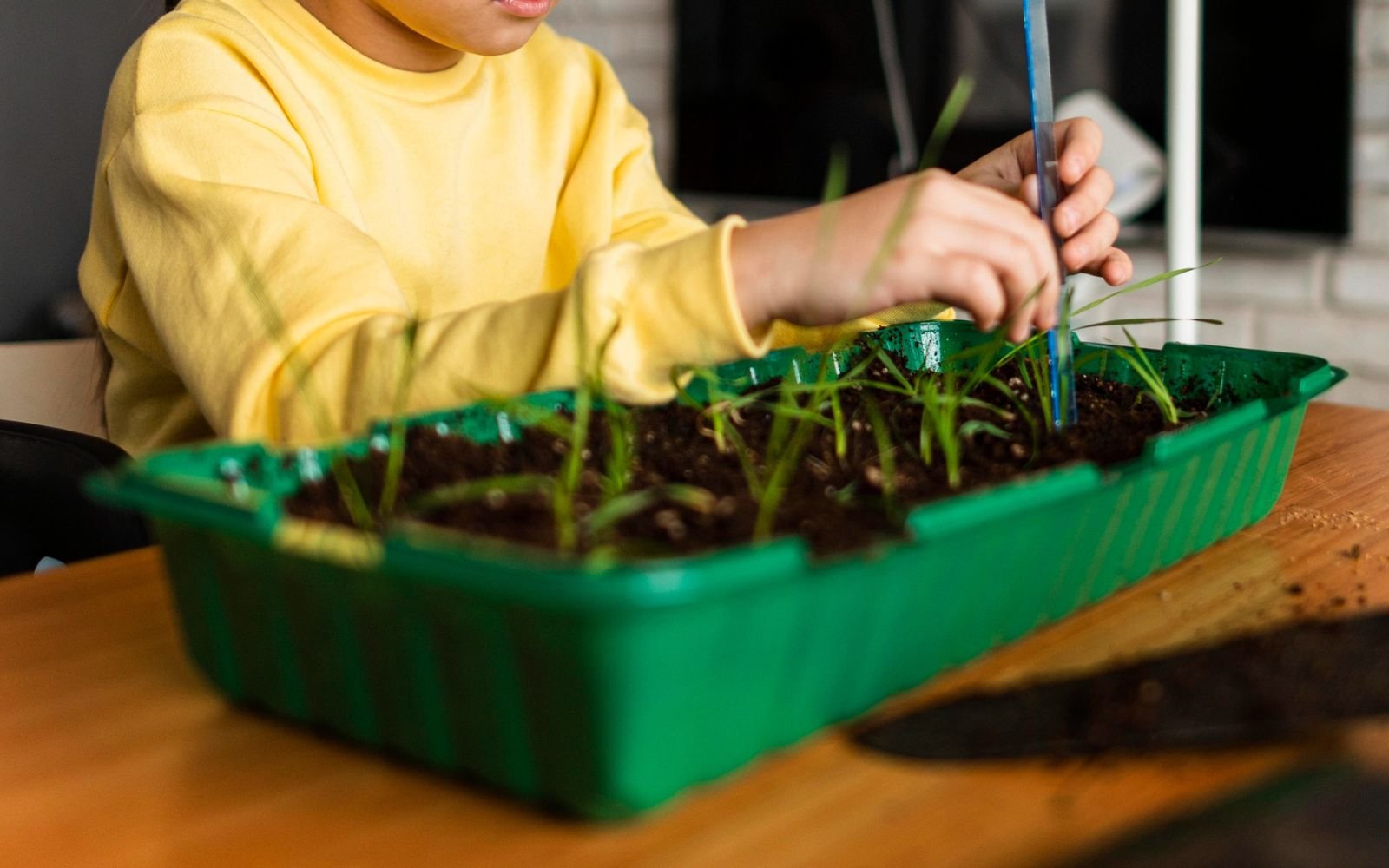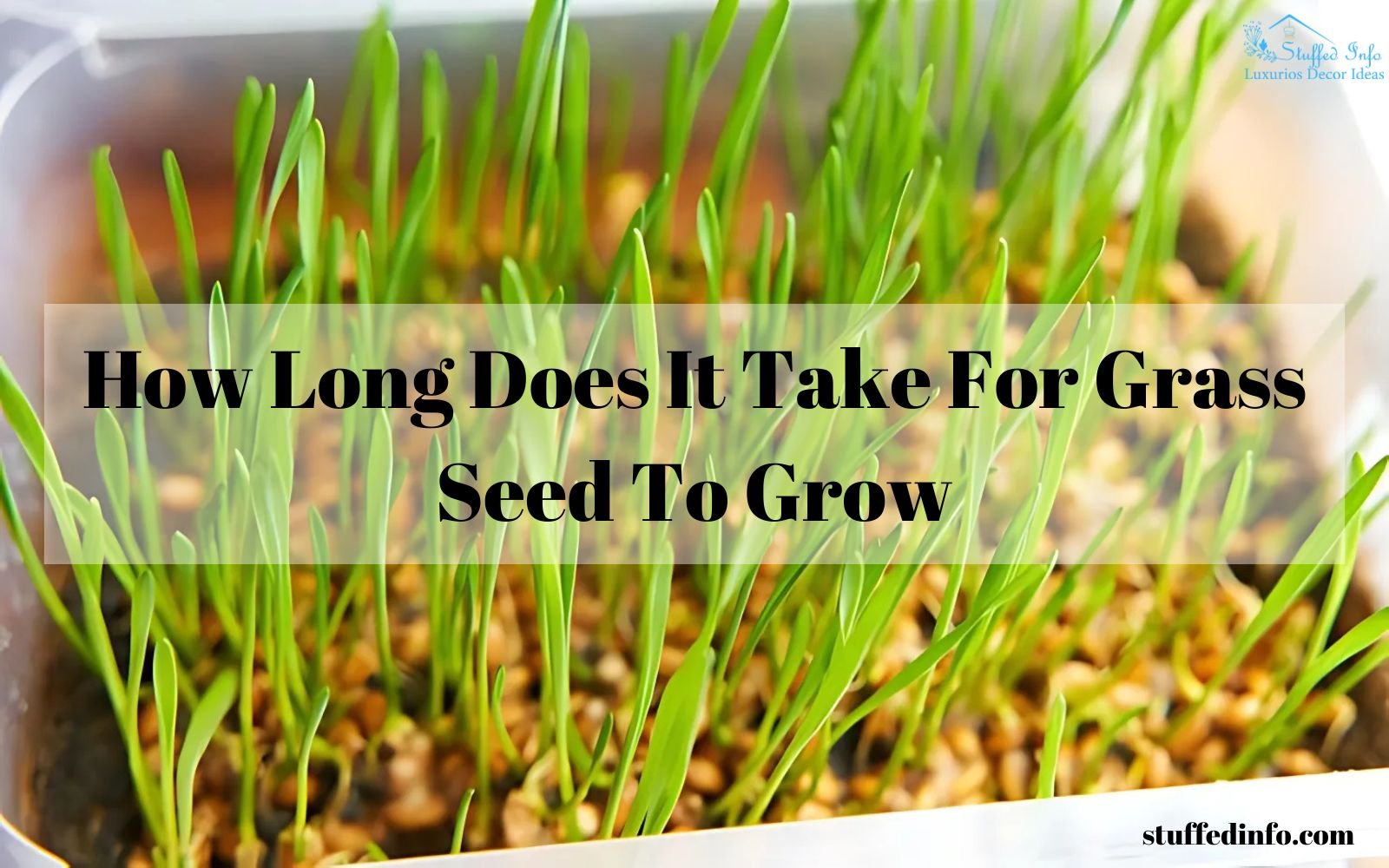Are you excited to turn your outdoor area into a green paradise but unsure how long it’ll take for your grass seed to sprout and grow? Well, the growth time can vary based on the type of grass, environmental factors, and how well you maintain your lawn. Therefore, if you’re thinking , “How long does it take for grass seed to grow?” we are at your help. Let’s take a closer look at the germination timeline, growth stages, and other important factors that affect grass seed growth. In addition, get ready to kick off your journey towards a lush, green lawn that’ll have your neighbors super jealous!
Table of Contents
ToggleGrass Seed Germination Stages
The answer to “how much time will grass seed require to develop?” is hidden deep in the germination stages. Specifically, germination is when a seed starts to sprout and turn into a plant. For grass, this whole thing goes down in a few main stages:
- Seedling Stage: (1-7 days): This is time for grass to grow from seed. The seed drinks up water, cracks open, and begins to grow roots
- Establishment Stage (7-21 Days) Shoots pop up, and the grass starts to spread out.
- Maturity Stage: (21- 30 Days) The grass gets fully established and hits its peak thickness/density.
Ultimately, depending on things like the grass type, soil vibes, and temperature, this whole process can take about 5 to 30 days.

Types of Grasses
Grass types are usually divided into two main categories:
- Cool-Season Grass: These grasses love cooler weather and do their best in the spring and fall. Some examples are Kentucky bluegrass and ryegrass.
- Warm-Season Grass: These grasses love the warm weather and grow the most during late spring and summer. Some examples are tall fescue and Bermudagrass.
Does Grass Type Affect Growth Time?
Yes, indeed. The kind of grass you pick really does change duration of grass seed to grow. Check out and compare how grass types affects time to sprout and grow.
- Cool-Season Grasses: Grass types like Kentucky bluegrass and ryegrass typically take around 10 to 14 days to get going.
- Warm-Season Grasses: Grass types like tall fescue usually sprout faster, usually in about 5 to 10 days.
So, Understand How Long Does It Take Grass Seed to Grow?
Grass seed’s development totally depends on how fast your particular grass type germinates. If you’re either planting a new lawn or adding more seeds to an old one, the germination period is basically the time it takes for the seeds to sprout and set down roots. Typically, this whole process, starting from grass to grow from seed to maturity, can take anywhere from 5 days to around 30 days, depending on the grass type, the weather, and the quality of the seeds and soil.

Here’s a breakdown of the germination times for some popular grass types:
| Season Type | Grass Type | Germination Time |
| Warm-Season | Bermudagrass | 10 – 30 days |
| Warm-Season | Centipedegrass | 14 – 21 days |
| Cool-Season | Fine Fescue | 7 – 14 days |
| Cool-Season | Kentucky Bluegrass | 14 – 30 days |
| Cool-Season | Perennial Ryegrass | 5 – 10 days |
| Warm-Season | St. Augustinegrass | 10 – 30 days |
| Cool-Season | Tall Fescue | 10 – 14 days |
| Warm-Season | Zoysiagrass | 14 – 21 days |
Difference in Growth Between Overseeding and New Seeding
Overseeding usually has quicker results since existing grass provides some shade and protection, often helping the new seeds germinate faster. In contrast, new seeding requires a bit more time and effort. Here’s a table summarizing the overseeding and new seeding timelines:
| Step | Overseeding Timeline | New Seeding Timeline |
| Preparation | 1-2 days: Mow the lawn, rake or aerate, apply starter fertilizer if needed. | 1-2 weeks: Clear area, till soil, amend with compost, level, and grade. |
| Seeding | 1 day: Spread grass seed evenly and water thoroughly. | 1 day: Spread grass seed, lightly rake, apply starter fertilizer, and water. |
| Germination | 7-21 days: Grass begins to sprout; water lightly and frequently. | 7-21 days: Grass begins to sprout; water lightly and frequently. |
| Initial Growth | 2-4 weeks: New grass starts to fill in; mow once grass is 3 inches. | 3-6 weeks: New grass grows; avoid heavy traffic on the lawn. |
| First Mowing | N/A | 6-8 weeks: Mow once grass reaches 3-4 inches. |
| Full Establishment | 4-8 weeks: Lawn becomes denser; reduce watering but water deeply. | 8-12 weeks: Lawn fills in and becomes denser; reduce watering but ensure deep watering. |
Is the Right Time to Plant Grass Important?
Timing is super-important when you’re putting grass seed in the ground. This is because:
- Cold temperatures in the air and soil can mess with germination, so you’ll want to skip planting in winter since the grass seeds won’t sprout right.
- The best time to plant actually depends on what type of grass you’re using and where you live.
Alright, so besides figuring out time it takes grass seeds to develop from seed, you also must know when’s the best time to plant it.
When Is the Best Time to Plant Grass?
There are usually two main planting seasons that are ideal:
-
Fall Planting: Best for Cool-Season Grasses
Here’s why you might want to think about planting grass in the fall:
- Suitable soil: Warm soil helps the seeds sprout faster.
- Ideal Weather: Moreover, cool temps and regular rain mean you won’t have to water as much.
- Perfect conditions: In addition, fall provides right soil temps around 50–60°F, and air temps sitting between 60–75°F.
- When To Sow: Now, try to seed at least 45 days before that first frost so it can fully grow in the fall and spring.
-
Spring Planting: Best for Warm-Season Grasses
Here are some reasons you might want to think about growing warm-season grass:
- Right Soil Condition: The soil heats up to around 65–70°F, which is just right for seeds to sprout.
- Best Weather: Early spring showers help keep the soil nice and moist.
- Right Time To Sow: Plant at least 90 days before the first frost hits in fall so the grass can settle in before it goes dormant.
Tip: Stay away from planting too early in chilly, wet soil, as this could cause the seeds to rot and the growth to struggle.
5 Factors Affecting Grass Seed To Grow.
So the answer to how long grass seed takes to grow depends on timing as well as the following 5 factors:
- Type of Grass Seed: Firstly, not every grass is made for every climate. Cool-season grasses like Kentucky bluegrass or ryegrass rock in chillier areas and can handle a bit of frost. On the flip side, warm-season grasses like tall fescue love the heat and usually handle drought better, needing less care.
- Climate and Region: Secondly, the temperature and moisture in the soil are super important for germination. Warm-season grasses like it hot, while cool-season grasses do better in those cooler spots.
- Soil Composition: Next, the best soil for grass seeds is a solid mix of minerals, organic stuff, and tiny living things. Sandy soil drains fast but struggles to hold nutrients, while clay soil keeps the moisture in but can get all compacted and heavy. For awesome growth, your soil should drain well, be weed-free, and sit at a pH level between 6.0 and 7.5.
- Soil pH and Fertility: Additionally, grass loves slightly acidic to neutral soils (pH 6.0–7.0). A soil test can give you the scoop on what nutrients you’ve got and if you need to jazz up the soil for better growth.
- Maintenance Practices: Finally, taking care of your grass properly is essential for helping those young seedlings grow strong and keeping your lawn healthy in the long run. Watering, mowing, and fertilizing at the right times will keep your lawn flourishing throughout its growth stages.
How to Choose the Right Grass Type?
Selecting the right grass type is essential for a healthy, vibrant lawn that thrives in your specific environment. Here’s how you can make the best choice:
- Assess Your Regional Climate:
- Northern climates: Opt for cool-season grasses to withstand cold winters.
- Southern climates: Choose warm-season grasses for their heat tolerance and drought resistance.
- Transition zones: Depending on your location, you may select either cool or warm-season grasses based on your regional conditions.
- Match Grass to Your Lawn’s Needs:
- High-traffic areas, choose durable options like tall fescue or Bermudagrass.
- Low-maintenance lawns, Zoysia grass and Centipede grass are excellent choices.
- For aesthetic appeal, Kentucky bluegrass offers a lush, uniform look but requires more maintenance.
- Consider Soil and Sunlight Conditions:
- Ensure your soil is suitable for your chosen grass by testing its pH and nutrient levels.
- Match your grass to your yard’s light conditions. Ryegrass and fescue tolerate shade, while Bermuda and Zoysia need full sun.
- Factor in Seasonal Preferences:
- If you prefer seeding in the fall, cool-season grasses are ideal.
- For spring planting, choose warm-season grasses to take advantage of warmer soil and consistent rain.
By selecting a grass type suited to your climate, lawn usage, and maintenance goals, you set the foundation for a lawn that looks great year-round.
Conclusion
Growing grass from seed needs a bit of patience, but with the right type of grass, timing, and care, you can get yourself a gorgeous, healthy lawn. Therefore, by knowing how long does it take for grass seed to grow, the different types of grass, the best times to plant you’re all set to nail that perfect lawn.
FAQ
- How long does it take for grass to establish after germination?
After germination, it typically takes an additional 2-3 months for grass to fully establish, depending on care and environmental conditions.
- How can I tell if my grass seeds are germinating?
Look for tiny green shoots emerging from the soil, which indicates that your grass seeds are starting to grow.
- What should I do if my grass seed isn’t growing?
Check the soil moisture, temperature, and sunlight exposure. You may need to adjust watering habits or consider reseeding with a different type of grass.







